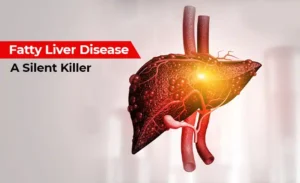
Silent Killers: Health Conditions with No Symptoms
What if your body was hiding a serious health threat—without giving you a single warning sign?
Not all illnesses announce themselves with pain, fever, or visible symptoms. Some creep in quietly, causing damage over weeks, months, or even years before being discovered. These are known as “silent killers”—health conditions that show little to no symptoms until it’s too late.
Understanding these hidden dangers can quite literally save your life. Here’s what you need to know.
Also check for : the-20-minute-workout-that-burns-fat-for-48-hours
What Are “Silent Killers”?
Silent killers are diseases or health conditions that develop without noticeable symptoms, especially in the early stages. By the time symptoms appear, significant—and often irreversible—damage may have already occurred.
These conditions can affect anyone, regardless of age, fitness level, or lifestyle. The only way to stay protected? Regular screenings, preventive care, and knowing the risks.
1. High Blood Pressure (Hypertension)
Often called the “silent killer,” high blood pressure rarely causes noticeable symptoms—yet it can quietly damage your heart, kidneys, and brain.
Why it’s dangerous:
-
Increases risk of heart attack, stroke, kidney failure, and vision loss
-
Affects nearly 1 in 3 adults, many of whom don’t know they have it
Prevention tip:
Get your blood pressure checked regularly—even if you feel perfectly fine.
2. Type 2 Diabetes
Diabetes often develops slowly, with early symptoms so mild they go unnoticed. By the time it’s diagnosed, nerve damage, vision problems, or kidney issues may already be underway.
Warning signs that go ignored:
-
Frequent urination
-
Increased thirst
-
Fatigue
-
Blurred vision
Prevention tip:
Annual blood sugar screenings, especially if you have risk factors like obesity, family history, or are over age 40.
3. High Cholesterol
Like high blood pressure, elevated cholesterol levels don’t cause obvious symptoms—but they can lead to deadly blockages in your arteries.
Why it matters:
-
Increases risk of heart disease, stroke, and arterial damage
-
Often goes undetected without a blood test
Prevention tip:
Request a lipid panel during your routine check-up to monitor your cholesterol levels.
4. Liver Disease (Fatty Liver)
The liver is incredibly resilient, so fatty liver disease can develop silently, even while the organ is being damaged.
Potential causes:
-
Obesity
-
Alcohol use
-
Poor diet
-
Diabetes
Why it’s a silent threat:
Many people don’t discover liver disease until they show signs of liver failure or cirrhosis.
5. Osteoporosis
You can lose bone density for years without feeling anything—until a sudden fracture or break reveals it.
Common in:
-
Women after menopause
-
Older adults
-
People with vitamin D or calcium deficiencies
Prevention tip:
Bone density scans and ensuring sufficient calcium, vitamin D, and resistance training in your routine.
6. Sleep Apnea
This condition disrupts breathing during sleep but may go unnoticed—especially if you sleep alone.
Clues you might miss:
-
Loud snoring (noticed by others)
-
Daytime fatigue
-
Morning headaches
Why it’s serious:
It increases the risk of high blood pressure, heart disease, stroke, and accidents due to poor sleep.
7. Colon Cancer
One of the leading causes of cancer deaths—but highly treatable if caught early.
The silent part:
-
Early stages often have no symptoms at all
-
Many skip colonoscopies due to discomfort or fear
Prevention tip:
Get screened starting at age 45, or earlier with family history.
8. Chronic Kidney Disease (CKD)
Your kidneys can lose a significant portion of function without showing any signs.
Why it’s risky:
CKD can lead to kidney failure, requiring dialysis or transplant
Risk factors:
-
Diabetes
-
High blood pressure
-
Family history
9. Aneurysms
These dangerous bulges in blood vessels can grow unnoticed—until they suddenly rupture.
Most common types:
-
Brain aneurysms
-
Abdominal aortic aneurysms
Why it’s deadly:
Often there’s no warning until a rupture, which can be fatal within minutes.
Prevention tip:
Imaging tests for those with family history or certain risk factors (like smoking or high blood pressure).
10. Glaucoma
Known as the “silent thief of sight,” glaucoma gradually damages the optic nerve with no early pain or vision loss.
Why it’s a problem:
By the time vision loss is noticed, it’s irreversible.
Prevention tip:
Routine eye exams—especially after age 40.
How to Protect Yourself
The best defense against silent killers is early detection. You can’t fight what you don’t know is there. Here’s how to stay proactive:
✅ Get Regular Check-Ups
Annual physicals and health screenings can catch issues before they escalate.
✅ Know Your Family History
Genetics matter. If diseases run in your family, get tested sooner and more often.
✅ Don’t Ignore the Subtle Signs
Fatigue, weight gain, shortness of breath, or brain fog may seem minor—but could signal something deeper.
✅ Prioritize Prevention
Healthy diet, exercise, sleep, and stress management reduce your risk for nearly every silent killer on this list.
Final Thoughts
Just because you feel healthy doesn’t mean you are healthy. Silent killers don’t knock before entering—they quietly steal your vitality until damage is done.
The good news? With regular screenings, awareness, and healthy habits, most of these hidden threats can be detected early and managed effectively.
Your health is your most valuable asset. Don’t wait for symptoms to take action.